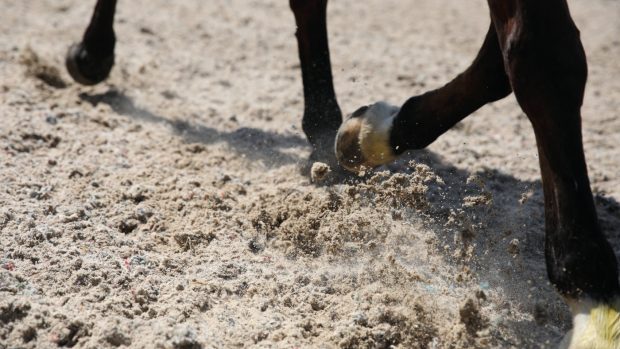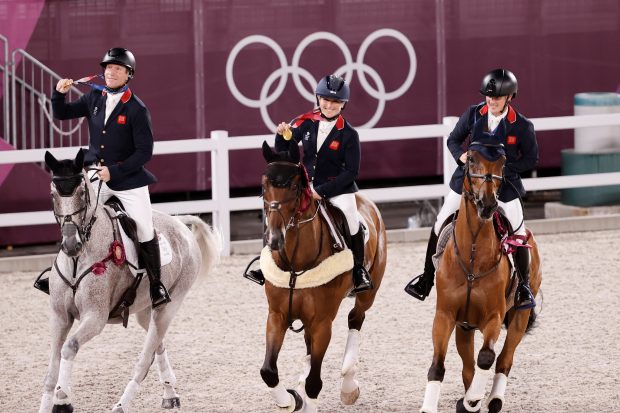When choosing a surface for your arena there are many factors to consider. The number of horses that will be using it, the discipline it will be used for and budget are three of the main ones but other elements to consider include drainage, the type of ground the surface is on and whether the arena is situated indoors or outdoors. Personal preference is also an important consideration.
“Some riders like a loose mix as they want their horse to work through it, some riders prefer a firmer mix so they work on top of the surface – it totally depends on what discipline the horse is doing, or how much the arena or gallops are used,” says Nicholas Collins, general manager at Martin Collins Enterprises.
Whatever surface you choose the aim should be the same – a surface with consistent, safe footing which provides both vertical and horizontal support and allows the horse to maximise performance with the least amount of stress and strain.
“The surface should distribute shock through the arena layers and should provide enough resistance under the hoof for the horse to balance and move into the next stride,” says David Andrews, managing director at Andrews Bowen Ltd.
Silica sand, a specific sand type containing a sub-angular grain shape which provides greater stability, was traditionally very popular but nowadays is more often combined with rubber or fibre.
It is imperative the correct type of silica sand is used as the wrong one can cause the arena to become very deep and ultimately lead to it needing to be replaced. Apart from requiring to be lightly watered, silica sand is low maintenance, provides good drainage and is long lasting.
Fibre sand is a very robust and resilient surface but it does demand some maintenance. Keeping it moist will help prevent dust, while weekly harrowing will give the surface an even wear rate. The mix of shredded fibres, which often come from the carpet industry, trap moisture within the surface and stop the sand from drying out and becoming loose, which can happen in rubber sand surfaces.
Fibre sand is similar to turf footing so it rides lightly as horses will stay on top of the surface rather than going deep into it.
“The sand is the key element in any sand and fibre surface, if the sand is of poor quality the surface will never be able to perform to its optimum. Any sand and fibre surface requires irrigation to keep it structured and provide a safe footing for the horse and rider. Without this, the surface will ride deep and can cause injuries especially to the lower limbs,” says Thomas Harper, director, Equestrian Surfaces Ltd.
“Synthetic surfaces can be added to existing surfaces as ‘top-ups’ or as a complete surface directly onto a simple drainage layer, giving potentially huge cost savings on labour and sand bases,” says Becky Haydon, sales advisor at Equestrian Direct Surfaces. “Usually, a blend of industrial strength synthetic textile and polymer materials are processed to produce a surface which provides exceptional cushioning qualities as well as providing an insulating layer — preventing the surface from drying out in the summer and freezing in the winter.”
When rubber is combined with silica sand it provides a springy, cushioned surface so is good for jumping arenas. Rubber is a good insulator against frost as it’s impermeable and it also doesn’t rot down like wood fibre, meaning it is incredibly durable. However, on the downside, rubber is not biodegradable so can be difficult to dispose of and in hot weather it can give off an unpleasant smell. It can also be contaminated with foreign objects such as metal.
“Rubber surfaces are not only environmentally unfriendly, as the rubber used is not biodegradable, but they can also become dry and loose in hot weather,” says Becky. “There are a number of versatile synthetic surfaces on the market today which are ideal for most types of equestrian disciplines without the downsides of rubber.”
Other surfaces that will not freeze in the winter are those that are wax coated. The wax coating binds the ingredients together which means there is less surface movement. The coating also stops it from becoming dusty and from drying out during the summer. While these surfaces can be more expensive to install they generally require less maintenance so you save money on irrigation or watering.
“A good waxed surface will give you a consistent performing ride 365 days a year, no matter what the weather. It provides a safe footing for any discipline and can be maintained to provide different going depending on the discipline and usage,” continues Thomas Harper.
Wood chip is the most cost effective and environmentally friendly surface but if the wood is recycled be aware that it could contain old nails, screws or staples. The size of the chips is also something to consider as if they are too big they can become stuck in horses’ hooves and if they are too small they can blow around. Another negative to wood chip is that it can become slippery when it starts to decompose, depending on the quality of wood that is used, but it is dust free and easy to dispose of.
Article continues below…
You might also be interested in:

7 steps to building your dream arena
Deciding to invest in an arena is an exciting but daunting prospect. We pick out the key points to consider

Subscribe to Horse & Hound magazine today – and enjoy unlimited website access all year round
Whichever surface you choose, there are plenty of reputable companies out there who can advise on what best matches your needs and preferences. It is important to look after the surface and ensure it is maintained properly. Regularly collecting droppings to prevent contamination is just one method which will help ensure your arena stays in peak condition for as long as possible.
“It is recommended that you use the correct maintenance equipment on your surface, not only will regular maintenance keep your surface working at its optimum performance level but will also extend the longevity of your riding surface,” says Janet Finnigan, sales manager at Equestrian Surfaces Ltd.
For all the latest equestrian news and reports, don’t miss Horse & Hound magazine, out every Thursday, and in the latest issue, don’t miss our arenas special, out now (dated 6 June 2019)





